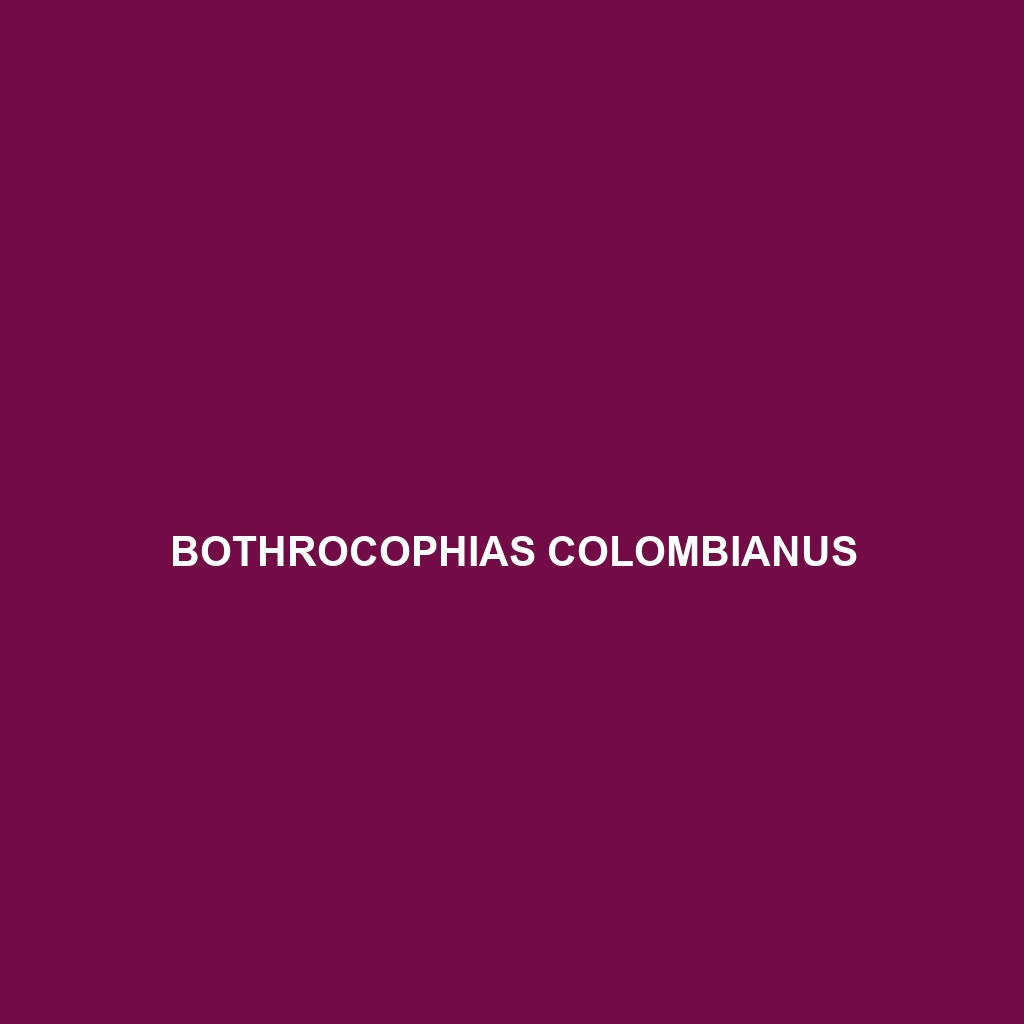Species Description: Bothrocophias colombianus
Common Name: Bothrocophias colombianus
Scientific Name: Bothrocophias colombianus
Habitat
Bothrocophias colombianus is primarily found in the lush montane forests of Colombia. These snakes inhabit elevations ranging from 1,500 to 2,500 meters above sea level. They are often seen in humid, dense tropical rainforests where the microhabitats offer ample shelter and prey. The unique climatic conditions and diverse vegetation make these areas critical to their survival.
Physical Characteristics
Bothrocophias colombianus can reach lengths of up to 1 meter (3.3 feet). Its coloration typically features a combination of rich brown and vivid green tones that provide excellent camouflage among the forest floor’s leaf litter. Characteristic features include a broad, triangular head and distinctive patterns that vary among individuals, enhancing their mysterious allure. The sturdy body shape and robust tail further distinguish them from other species in the region.
Behavior
This species is primarily nocturnal, which allows it to avoid daytime predators and hunt for food during the cooler hours. Bothrocophias colombianus displays a unique hunting technique, using ambush strategies to capture prey. Its ability to remain motionless for extended periods aids in their stealthy approach. Social behaviors remain largely solitary, with interactions generally limited to mating seasons.
Diet
Bothrocophias colombianus is a carnivorous predator, mainly feeding on small mammals, birds, and amphibians. Its diet is crucial for maintaining the population balance of many smaller species in the ecosystem. The snake is known for its capacity to consume prey larger than its head, slowly swallowing them whole after immobilization using constriction techniques.
Reproduction
Reproductive activities for Bothrocophias colombianus typically occur during the rainy season, peaking between April and June. Females give birth to live young, with litter sizes averaging between 8 and 15 offspring. Mating rituals involve intricate behaviors, where males display courtship behaviors that can include body posturing and scent marking to attract females.
Conservation Status
The conservation status of Bothrocophias colombianus is currently classified as vulnerable due to habitat loss from deforestation and human encroachment. Conservation efforts are critical to enhancing their habitat protection and ensuring the survival of this unique species in its natural environment.
Interesting Facts
One fascinating aspect of Bothrocophias colombianus is its ability to change color slightly based on environmental conditions, which aids in camouflage. Moreover, it plays a significant role in controlling pest populations, making it an invaluable species within its ecosystem. Additionally, local legends often highlight this snake’s elusive nature, adding a layer of cultural fascination.
Role in Ecosystem
Bothrocophias colombianus is an important predator within its montane forest ecosystem, helping to keep populations of small mammals and other prey species in check. Its interactions with various organisms, including its prey and potential predators, create a balanced food web that supports biodiversity in its habitat. The presence of this species also indicates a healthy ecosystem, reflecting the intricate balance of nature.
